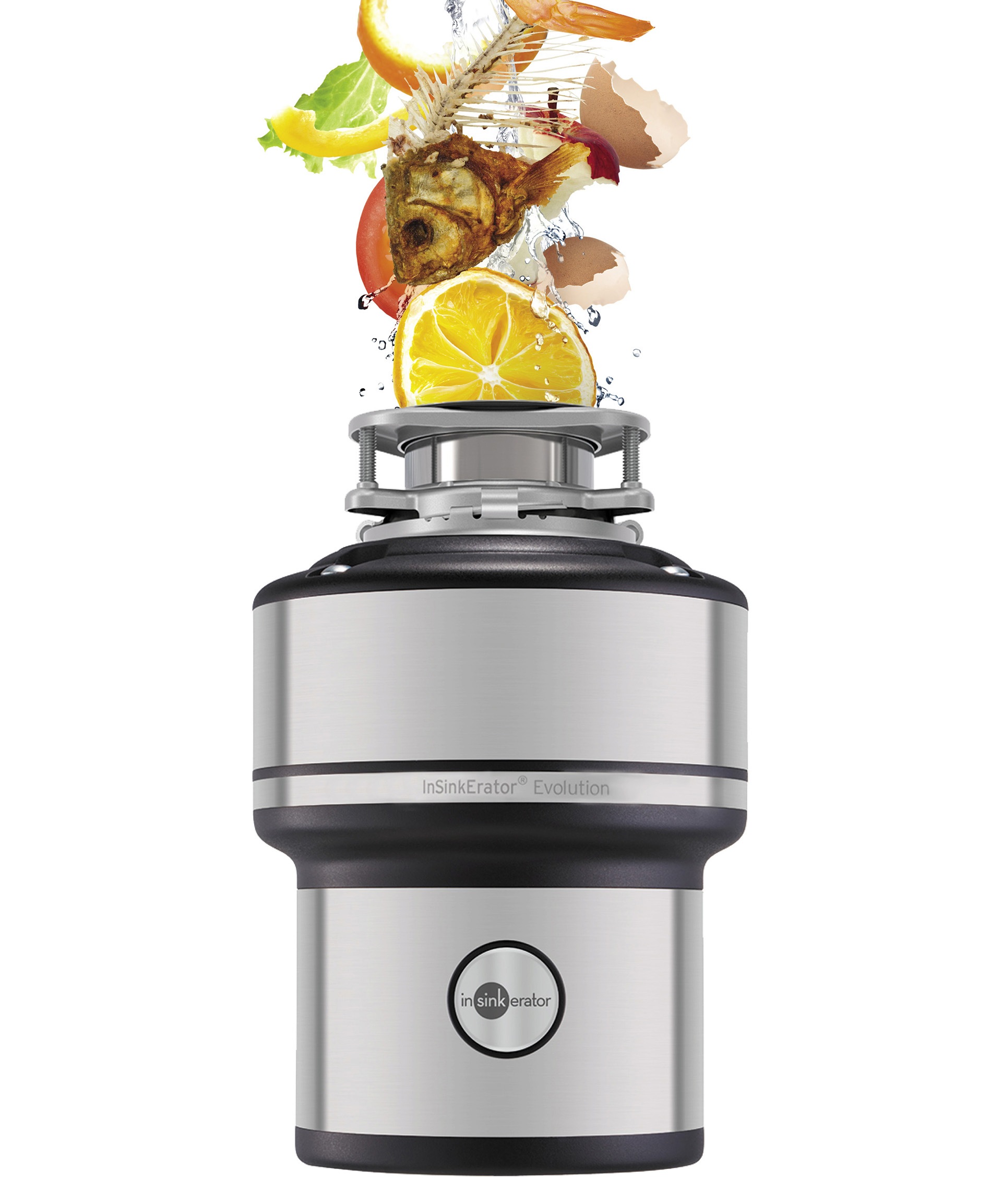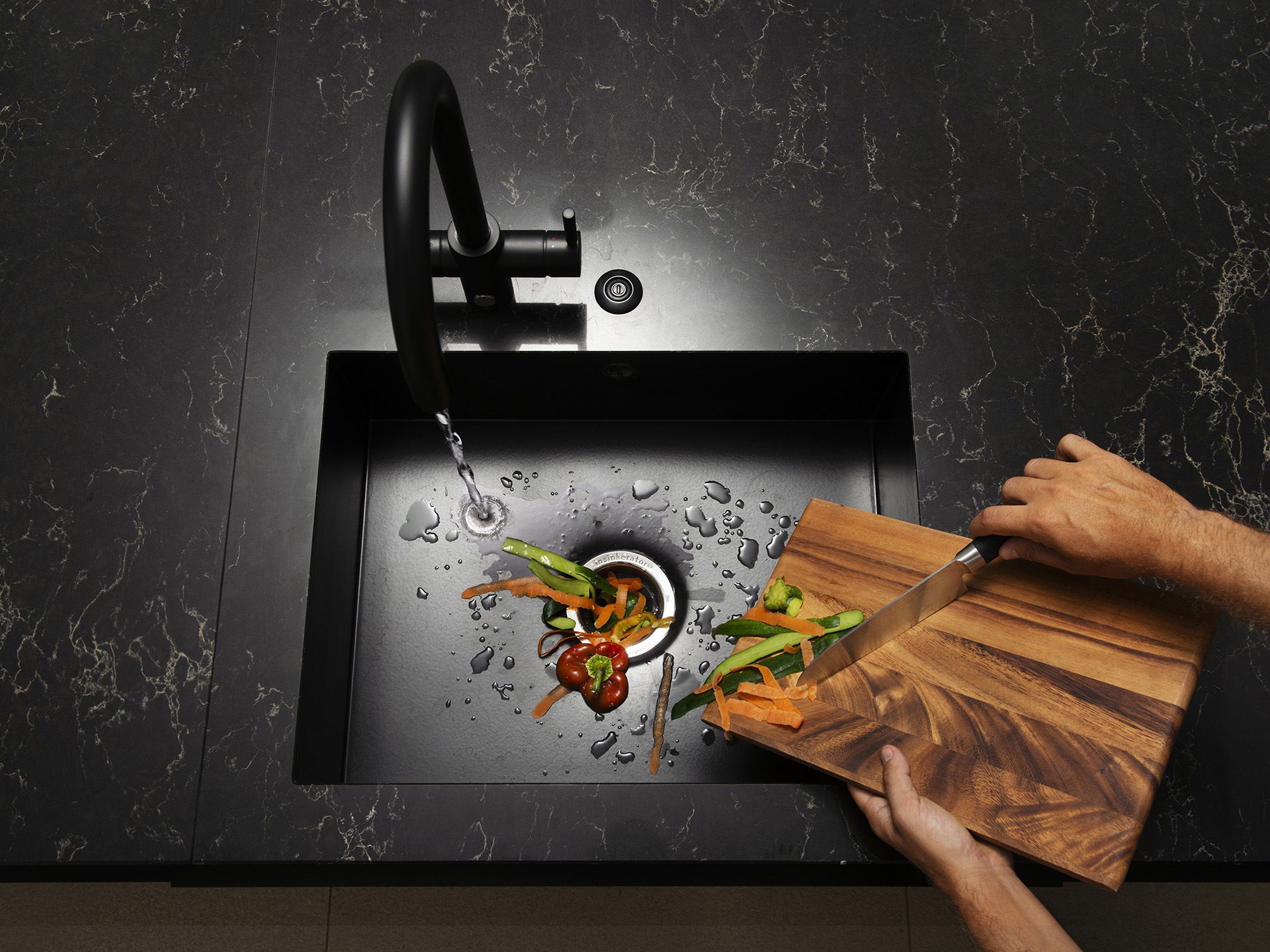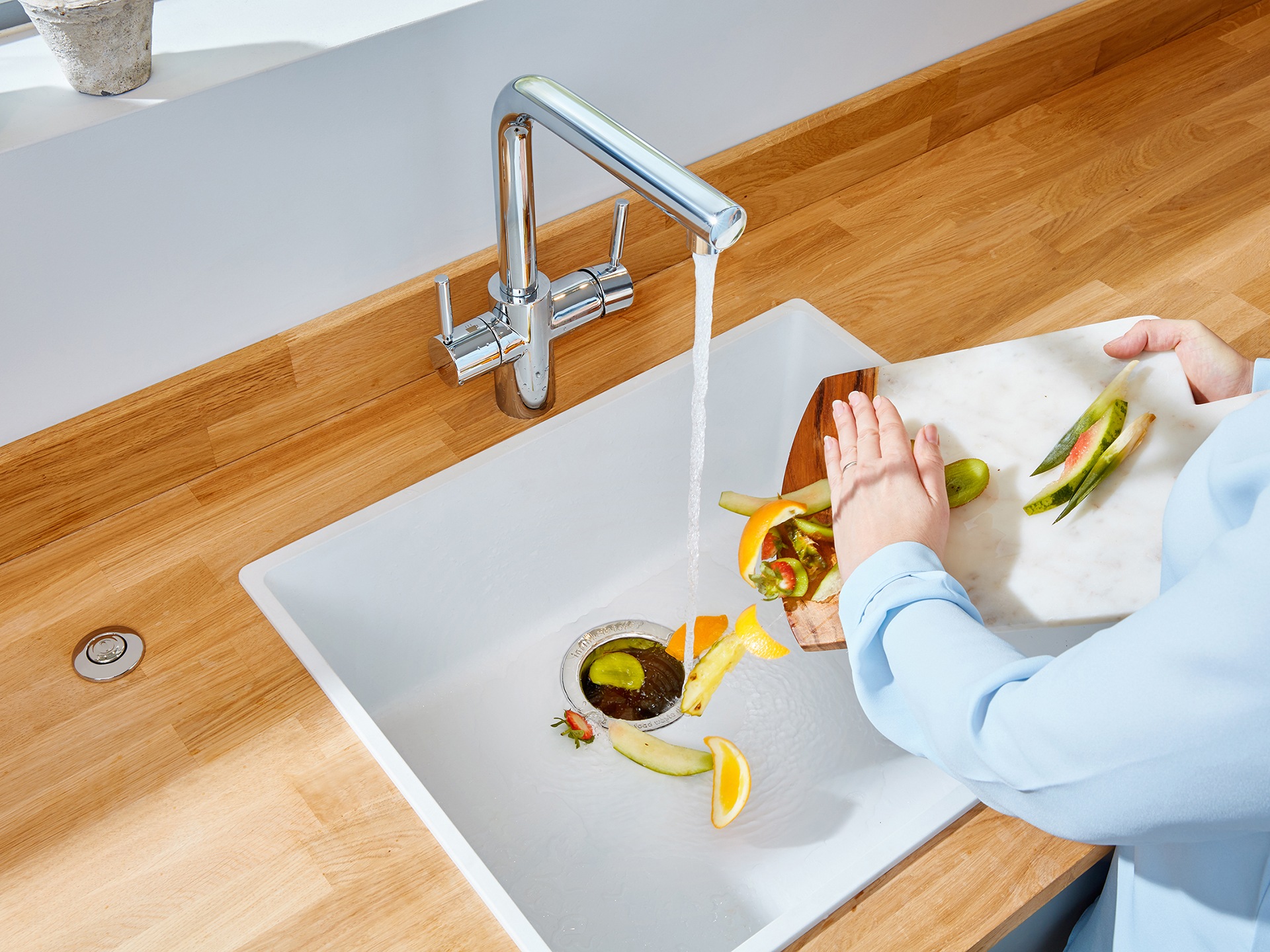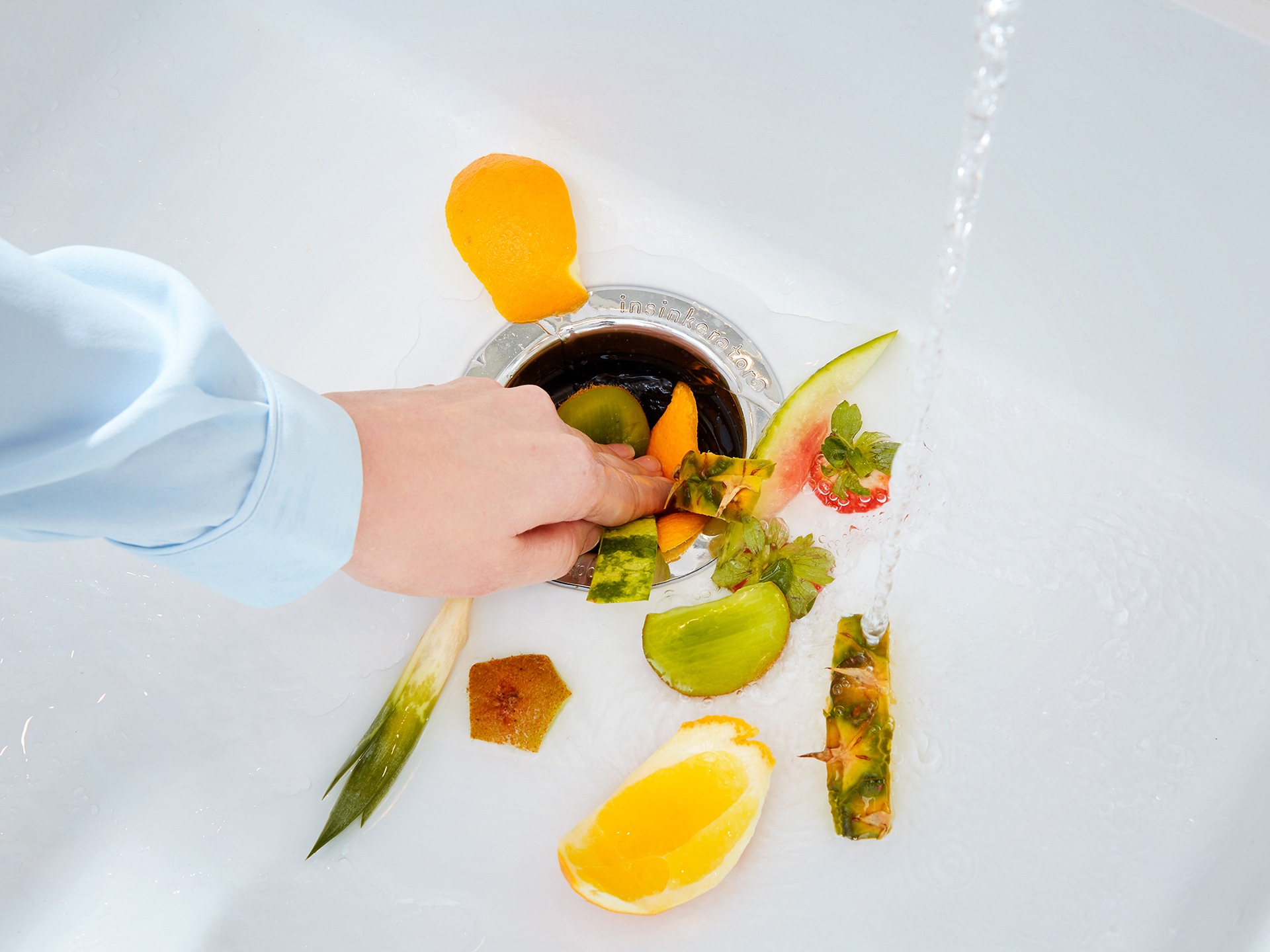What is a waste-disposal unit? Pros and cons of the food disposal system
What exactly is a waste-disposal unit? And should you invest in one? We've got everything you need to know about food waste disposers
The waste-disposal unit is a gadget that hasn’t, as yet, taken off widely in the UK. Estimates suggest about six per cent of UK homes have one, in comparison with half of homes in the US. Garbage disposal in kitchen sink was briefly popular over here in the seventies and eighties and, today, they are being installed in high-end kitchens. Here’s our need-to-know low down on waste-disposal units.
What is a waste-disposal unit?
A waste-disposal unit – or food waste disposer, as they are sometimes known – is an electric grinder plumbed in under your kitchen sink to help you get rid of food waste. The idea is you put waste food down the sink while running the tap, and the waste disposal pulverises the food scraps into a sludge that flushes away by the running water down the waste pipes into the sewer. You can also use a waste disposal unit if you have a septic tank.

Image credit: InSinkErator
Are waste disposal units legal in the UK?
At the time of writing, waste disposal units continue to be legal in the UK. This is providing that the solid food waste in the output slurry is separated and collected for recycling, by the use of a dewaterer. This also has the added benefit of reducing the volume of solid waste that needs to be stored prior to your recycling collection.
Any confusion over the legality of waste disposal units in the UK could be linked to new recycling laws which came into place on 31 March 2025. This new laws govern workplaces with more than 10 employees in England, and state that all must separate their waste before it is collected. This includes waste produced by employees, customers and visitors.
You must always separate dry recyclable materials, including plastic metal, glass, paper and card. But alongside this the new laws also apply to food waste, non recyclable waste and arrangements are to be made for garden waste, if your workplace generates this.
Find more information on the new laws on the government website here.
How do they work
Contrary to popular perception, waste-disposal units don’t contain a nest of spinning blades. Rather, there is a round plate inside the cylindrical unit that spins when the waste disposal is switched on. This plate has ‘lugs’ (bumps) on it, which, aided by centrifugal force, push the food waste, mixed with water, out to the edge of the plate then out through small holes around the edge of the unit. This process pulverises the waste, turning it into tiny particles, which, mixed with the water running through the unit, form a sludge that flushes away down the waste pipe. You can see how it works in this video.
Historically, the low adoption rates in the UK have been blamed on the incompatibility of waste-disposal units with the country’s old sewage network. But recent research such as this questions the validity of that idea.
Companies such as InSinkErator and WasteMaid and Franke make a range of models starting from about £150 up to £800 or so. The high-end units feature more powerful motors, larger capacity and better sound-proofing. They can also cope with tougher food scraps by means of multistage grinding processes.
What can you put in them?
Most waste-disposal units can cope with most food. There are a few things that in the past you couldn’t put in them: bones bigger than chicken bones, fibrous fruit and veg such as banana skins, pineapple skin, potato peelings, large cabbage leaves and sweetcorn husks. And cheaper units still can’t cope with these. But modern, top-of-the-range units can now deal with pretty much any foodstuff. However, you shouldn’t put fat, oil and grease (FOG) down there as these do block drains. Don’t let any cutlery or anything else not intended to go down the drain find its way into the unit either.
How to use a waste disposal
There are two types of waste-disposal unit: continuous feed and batch feed. Continuous-feed are operated by a wall switch near the sink. Nowadays, these are often air switches, which use air to operate a switch at a distance from the electrical source.

Image credit: InSinkErator
This is how to use a continuous-feed unit:
- Take out the sink stopper (plug) and turn on the tap to run a medium flow of cold water into the sink
- Turn on the waste disposal
- Scrape the waste down the hole into the unit while the tap is still running
- When you can tell from the change in noise that the grinding has stopped, let the water and unit run for another 20-30 seconds before turning both off
Batch-feed units work in a similar way, but you turn them on and off using the special stopper (plug) in the sink.
- Load up the food waste into the unit by pushing it down the plug hole
- Turn on the cold tap with a medium to strong flow
- Put the stopper into the plug hole and turn it until the disposal starts working
- When you can tell from the change in noise that the grinding has stopped, let the water and unit run for another 20-30 seconds
- Remove the stopper to turn the unit off, and turn off the tap
You must always use cold water with a waste disposal. Parents who are concerned about young children operating the unit tend to prefer batch-feed waste disposals.
Noise and smells?
More powerful models tend to be quieter than cheaper ones. Generally waste disposals are less noisy than they used to be, and, in any case, they are only ever run for a very short time.
The recommended way to clean a waste-disposal unit to stop it becoming smelly is to run some chopped up lemon and ice cubes through it.

Image credit: InSinkErator
Green or not?
The evidence for the environmental impact of waste-disposal units is not cut and dried. At the simplest level, it might seem daft to use water and electricity that you don’t need to use. But food waste has to be disposed of somehow, and this will involve some energy use, for example, by the trucks used to collect food waste. Plus, food waste that goes down the drain is being kept out of landfill.
Water UK, the trade body for water companies in the UK, has come out against the use of waste disposal units for three reasons:
More sewer blockages
If more households were to use waste-disposal units, Water UK claims there would be a higher risk of drain blockages. Specifically, they point to an increased risk of blockages due to more fat, oil and grease being put down the sewers. ‘FOG causes lots of the sewer blockages we have to clear each year and, in some cases, it can cause ‘Fatbergs’. There is also a concern that the food particles will become a pollutant and cause of eutrophication (over enrichment of water).
Higher energy use by water companies
Water UK also says: “Widespread use of food waste disposers would [lead to] increased costs to water companies due to the increased biological load that macerated food waste causes at the wastewater treatment works. This would lead to increased energy consumption required to treat this load so that our treated wastewater can be safely returned to the water environment. In these times when we are all trying to do what we can to reduce our carbon footprint, this would be most unhelpful.”
Increased household water use
They suggest that, where a waste disposal unit is installed, water use increases 3-4.5 litres per person per day.
Of course, water companies are commercial organisations looking to minimise their costs. And it is worth noting that most of the sewage treatment plants in the UK now make fertiliser and, increasingly, biomethane – a sustainable alternative to natural gas – from sewage sludge. Arguably, the addition of more food waste from the drains would simply allow them to produce more of the low-carbon biogas.
Around the world
Garbage disposal units, as they are called over there, are popular in the States, as well as in Australia and New Zealand. The gadgets have gone in and out of fashion since their invention by InSinkErator founder, John Hammes, in 1927. At various times, in various places, they have been subject to government bans or incentive schemes. Currently they are banned for commercial use in most situations in Wales, Northern Ireland and Scotland. And a ban on commercial food macerators looks set to come into effect in 2026 in England too.
Garbage disposals were banned in New York in the 1970s because of fears food would block the sewers and pollute the Hudson River. But the ban was lifted in 1997 because of the benefits they offered in terms of less domestic refuse and consequently fewer vermin such as rats, cockroaches, and foxes.
Back at home
Interestingly, as recently as 2012, food waste disposers were considered a sustainable option by the UK Local Government Association (LGA). Its members don’t maintain the sewer system but do carry the cost of waste collection and disposal. They were looking for cost-effective and environmentally-friendly ways to deal with food waste and reduce the amount going to landfill. Their report on the subject makes for interesting, if nerdy, reading, and presents a more nuanced (and positive) picture of the value of waste disposals.
It suggests problems might arise only when a much higher proportion of households had adopted the gadgets. In fact, in the mid-2000s, two English local authorities, went so far as to give cash incentives for residents to install food waste disposers to reduce the amount of food waste going to landfill.
Other ways to get rid of food waste
There is a lot of food waste to dispose of. According to the Office for National Statistics, nearly ten million tonnes of food waste was produced in the UK in 2018, that’s 143kg per person. And households were responsible for 70% of this. You can find tips on how to prevent food waste at Love Food Hate Waste.
Caddies
Today, those of us who have been given them are meant to dispose of our food waste in the food waste bins (caddies) provided by local authorities through their recycling schemes. Not all authorities provide a food-waste collection yet. But, under the Environment Act 2021, which aims to streamline and improve recycling, they will all be required to offer households weekly collections of waste food by 2026. At that point, all food waste will have to go in a separate collection rather than in with the general waste.
The government’s aim is that all the waste food collected will be treated with anaerobic digestion to produce biomethane and a digestate. This is the treated food residue, which can be spread on soil as a fertiliser, returning nutrients from the food back to the earth.
Composting
At the household level, one of the most sustainable ways to get rid of your food waste is to compost it – if you have a garden and the inclination. There are lots of videos on YouTube showing how to do it, like this one.
But it’s only a partial answer. You can compost fruit and vegetable peelings, cores, tea bags, coffee grounds, filter papers, and egg shells. But that leaves a lot of foods you can’t put in compost, including cooked food, fish, meat, and dairy products. And you need to be committed to the process.
Electric composters
Some people who have local-authority food-waste caddies dislike them because of the smell of rotting food. Additionally, the flies, ants and maggots can be a problem. So another choice to help tackle these problems could be an electric composter such as the Sage Foodcycler, Vitamix Foodcycler or Lomi. These are small, sealed counter-top bins that use heat to speed up the composting process. Some people use the dried material produced as soil improver for their pot plants or garden. Others just put the end product into their green bin.
READ MORE









